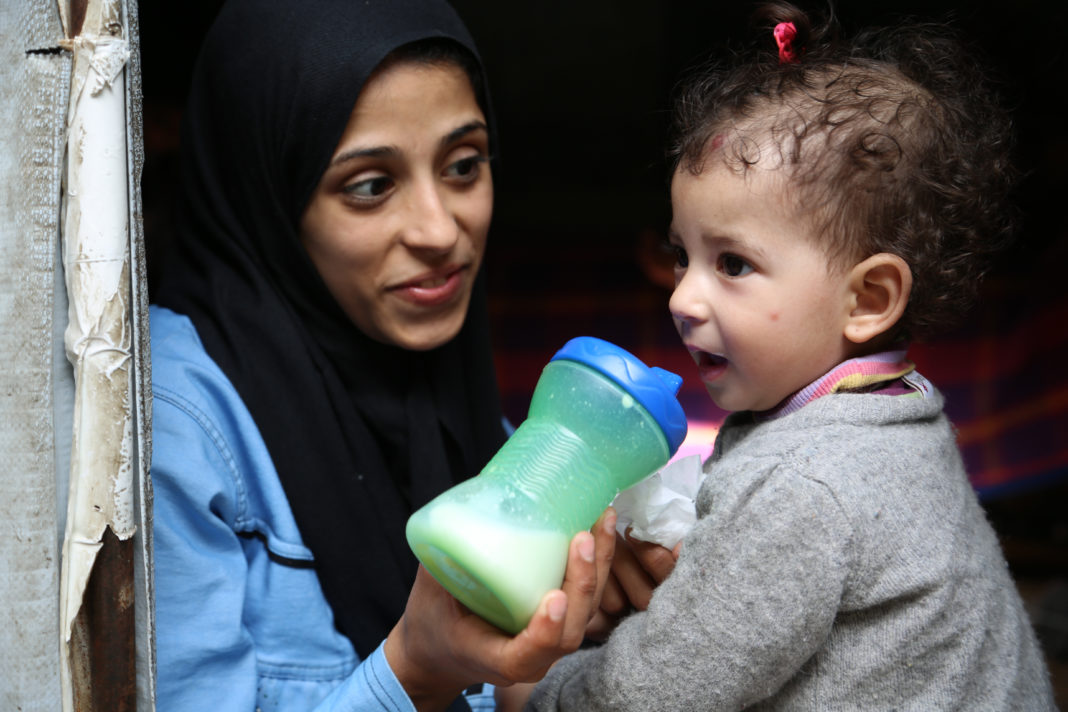Would you take your child and put him in a boat that has a slight chance of sinking? You would never do it. Unless you had no choice. ‘There are people who migrate out of complete destitution, not because they want to, but because they have to.’ Arif Husain, chief economist at the World Food Programme, has no doubt: ‘We should help people who don’t want to move, not been forced to move”.
Displaced people should be assisted in safe locations closer to their places of origin to “reduce onward migration flows as a survival strategy” and prevent suffering and death along the migration routes. That’s one of the key recommendations by a recent study WFP conducted to investigate the role played by food security and other factors in compelling international migration.
According to WFP, the absolute number of migrants has increased over the last 15 years, reaching 244 million people in 2015, but the percentage of the total global population has remained steady at the 3 percent. The study – drawn from data on migrations and interviews to refugees from different nationalities in Lebanon, Jordan, Greece, Turkey and Italy – established that each one percentage of food insecurity increase pushes 1.9 percent more people to migrate, while migration outflows increase by 0.4 percent for each year of conflict. It also indicates that the vast majority of migrants remain on their own continent – nine out of ten in Africa, eight out of ten in Asia – and that nine out of ten migrants are hosted by low and middle-income countries.
The report advises to pay more attention to the host communities and invest more in resilience. ‘[But] this is something which WFP alone cannot do. We have to be coordinated, we have to work together … We need the combination of humanitarian and development’, Husain told Degrees of Latitude in an exclusive interview.
Close to home
Understanding the dynamics of migration is crucial to improve protection and assistance to displaced people. ‘Our study shows that when people move, their objective is to go to the closest place to their house’, he said. ‘They are displaced in their countries at least three times before they decide to [leave the country]’.
‘[We] spend days looking for bread and couldn’t find any’ and when assistance was cut off ‘[we could only] eat edible leaves found in the surrounding area’, a Syrian woman interviewed by WFP told. ‘Syrians are not moving because they want to move … If we can provide them assistance closer to their homes, this is what they want’, Husain said.
Refugees try to stay as close to home as possible where culture, habits, and language are similar – ‘Gaziantep reminds us of Aleppo and we feel comfortable here’, a refugee told WFP – hoping to return to their home country as soon as there is stability. They also tend to move to countries where they know they will be treated better, the immigration criteria are simpler and the benefits higher: ‘Cell phone technology, mobile and social media have changed things significantly. Today, people decide on the basis of the information they get and [they] can do it in real time’, Husain explained. ‘Uniformity of benefit today matters. We live in a globalized world, we live where media is available, information is available …’, he said.
‘When we are making policies and regulations – we have to think like a refugee’, Husain explained. ‘If you want to deal with it, you need to have a uniformity of benefits. And it doesn’t mean only in European countries …’, he said.
Assisting displaced people close to home not only may prevent further displacement and reduce forced migration, but it is also more cost-effective. ‘The biggest bottleneck right now is resources because the demand is so high. It is not that donors haven’t been generous; it’s just that we are passing through a time of turmoil where the demand for assistance is so much higher than it has ever been before’, he said.
According to Husain, providing assistance to migrants in Lebanon or in Jordan is ‘at least sixteen times cheaper’ than in Europe and there are less political and stability costs associated.But, host communities must be supported. ‘When I went [to Lebanon and Jordan] in 2012 people were talking about refugees saying: These are our brothers, these are our sisters, we need to help them, we will support them with whatever we have’, he said. Three years later, after the population in Lebanon increased by one-third, in Jordan by ‘about 20 percent’, Schools, hospitals, infrastructures, welfare systems are strained and people are struggling. ‘In places like Lebanon or Jordan the burden is extreme. … We have to find a way of easing the pain of the people who have so openly hosted all these refugees’, Husain said.
Further investigation is needed
This report is just a starting point for WFP. ‘We want to keep talking to refugees, to migrants, we will have a second phase soon’, Husain explained.
‘For the first time … we have really been able to establish a relation between food security, conflict and migration’, he said. But the driving forces and the patterns of migration evolve and they require investigation to better target humanitarian interventions. ‘In the early 2016, I was looking at the number of people who were seeking asylum in Europe …. If you look at the number of people who have migrated from Syria there was nothing until about the third or the fourth quarter of 2015 and then there was a spike. For me the question was: Why? What happened?’, Husain told. Now, the number is back down: ‘We want to ask the same people, the same questions: What’s happened? Why are you not going?’, he explained. Maybe the answer is simply that it’s too difficult or that the conditions in the host countries have changed. Those are hypothesis that WFP is going to test in the next few months. That’s the value of empirical studies, according to Husain: They can test ‘perceptions’ and ‘myths’ around migration.
Photo credits: WFP/DinaElKassaby



